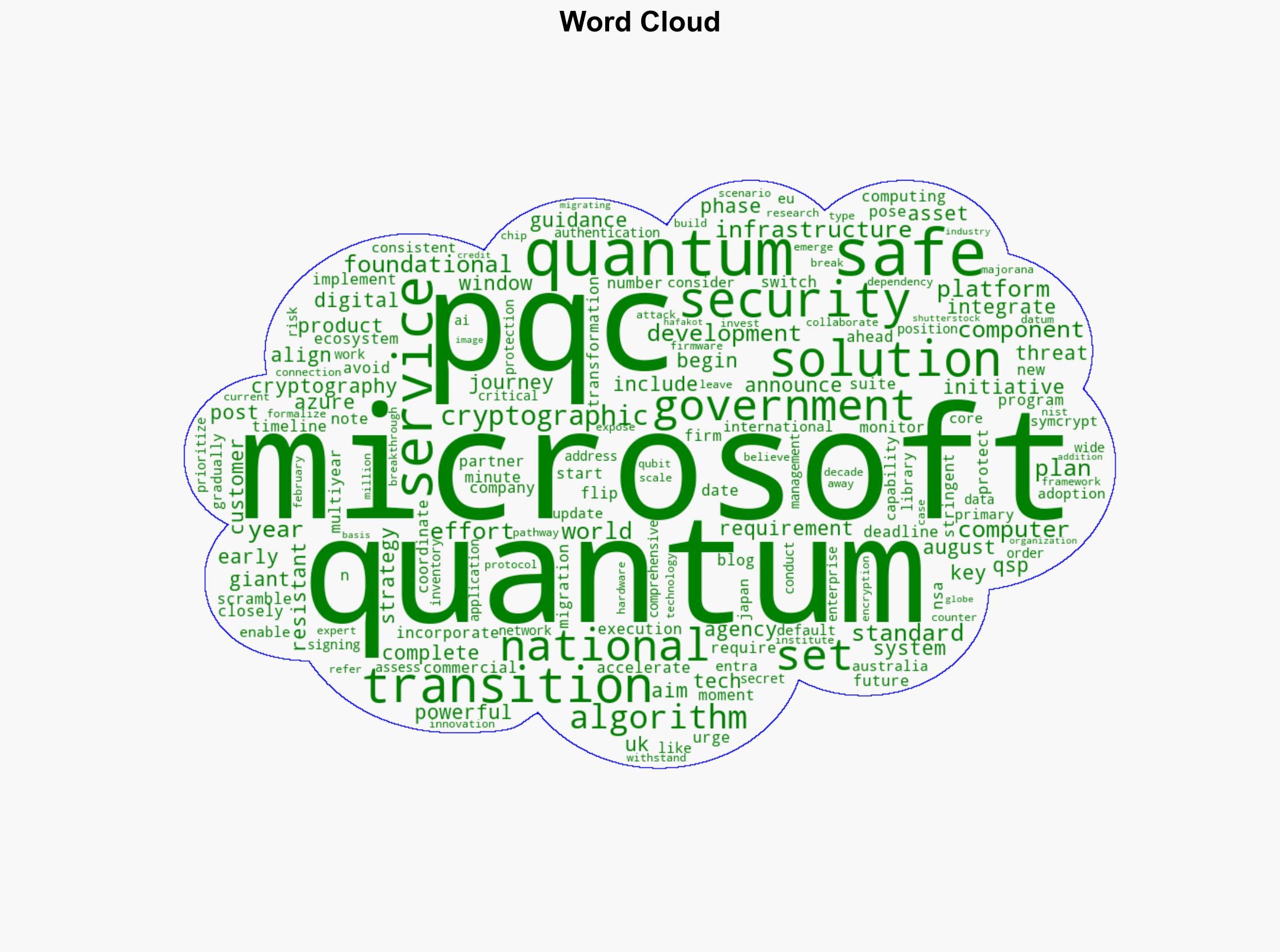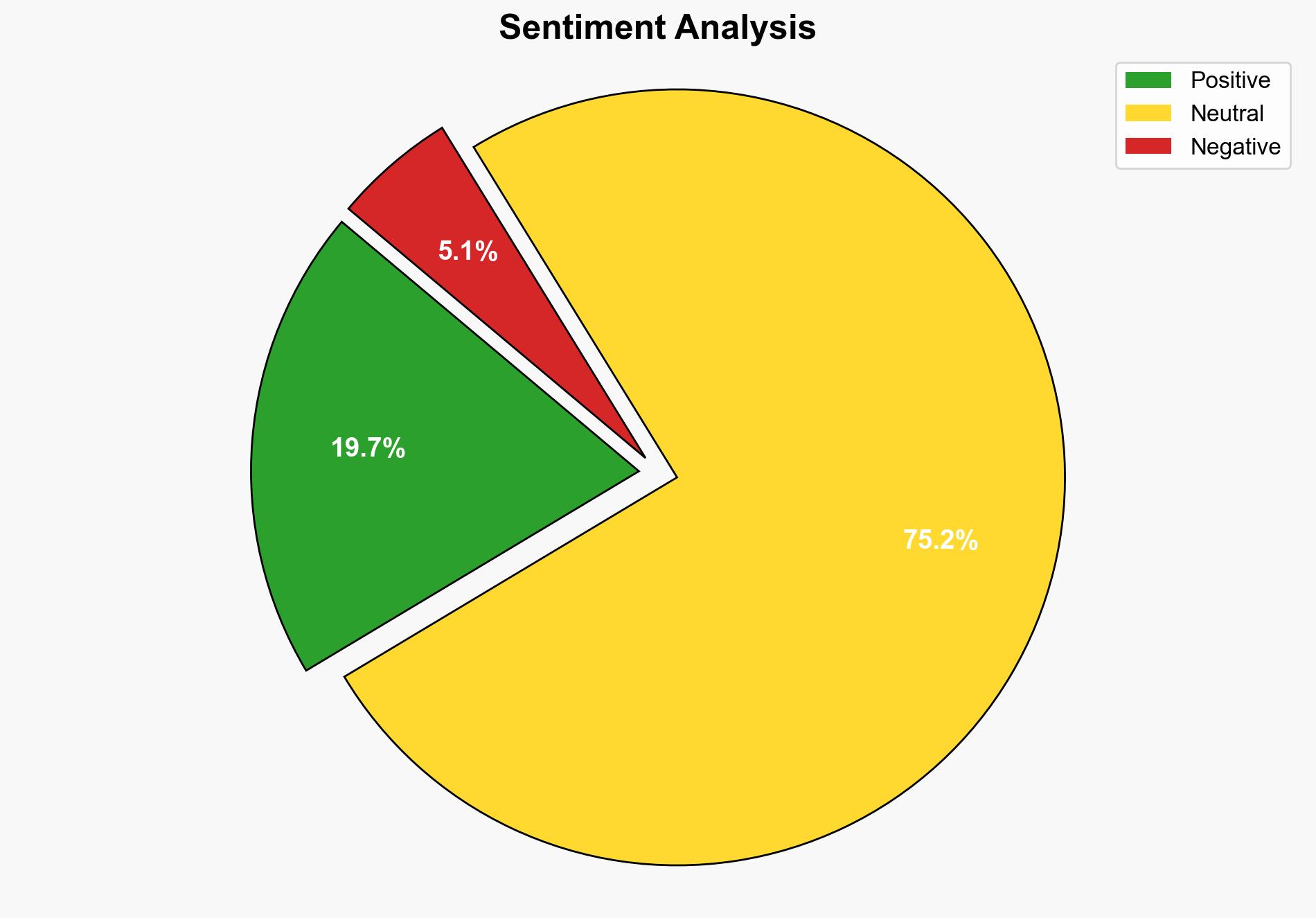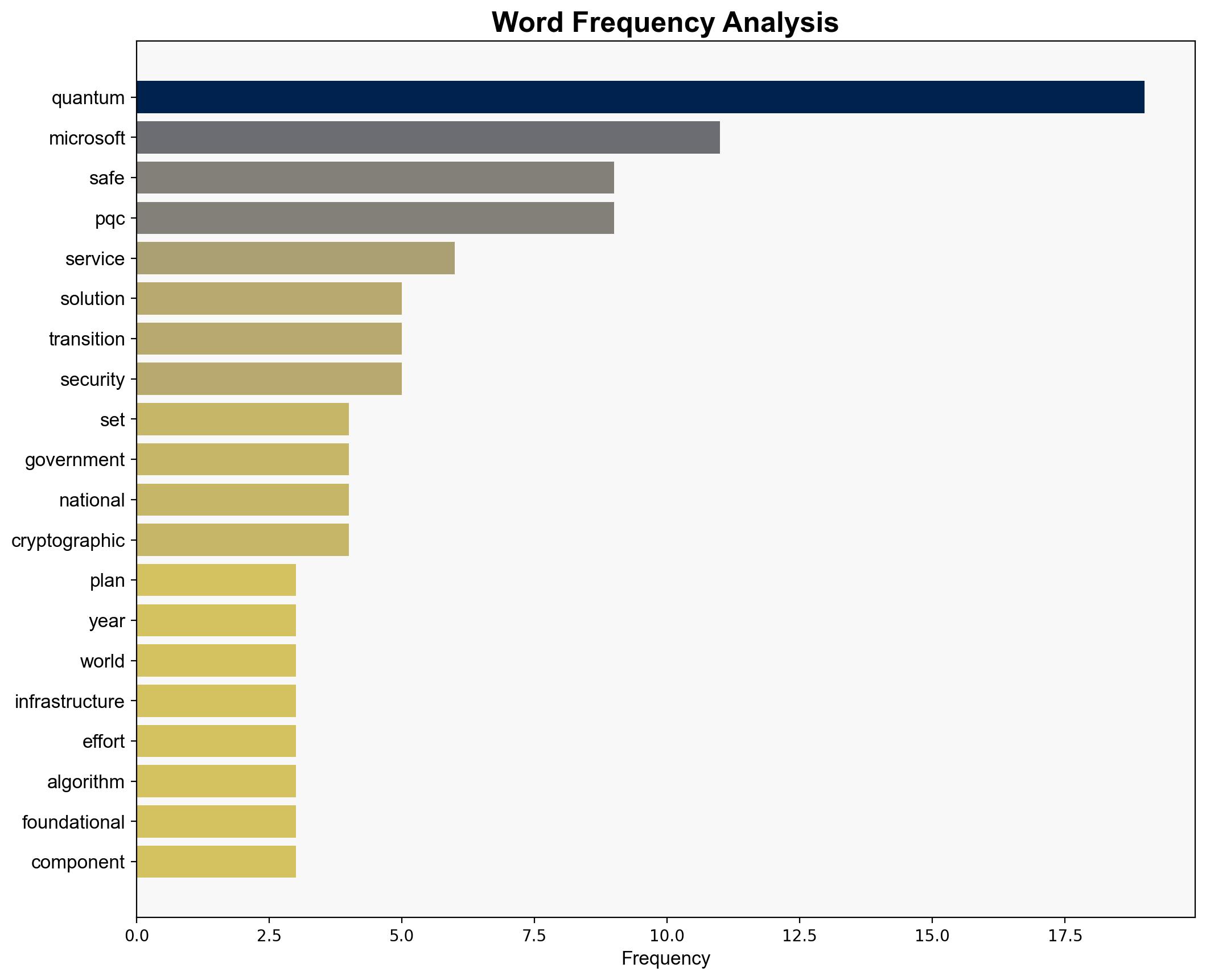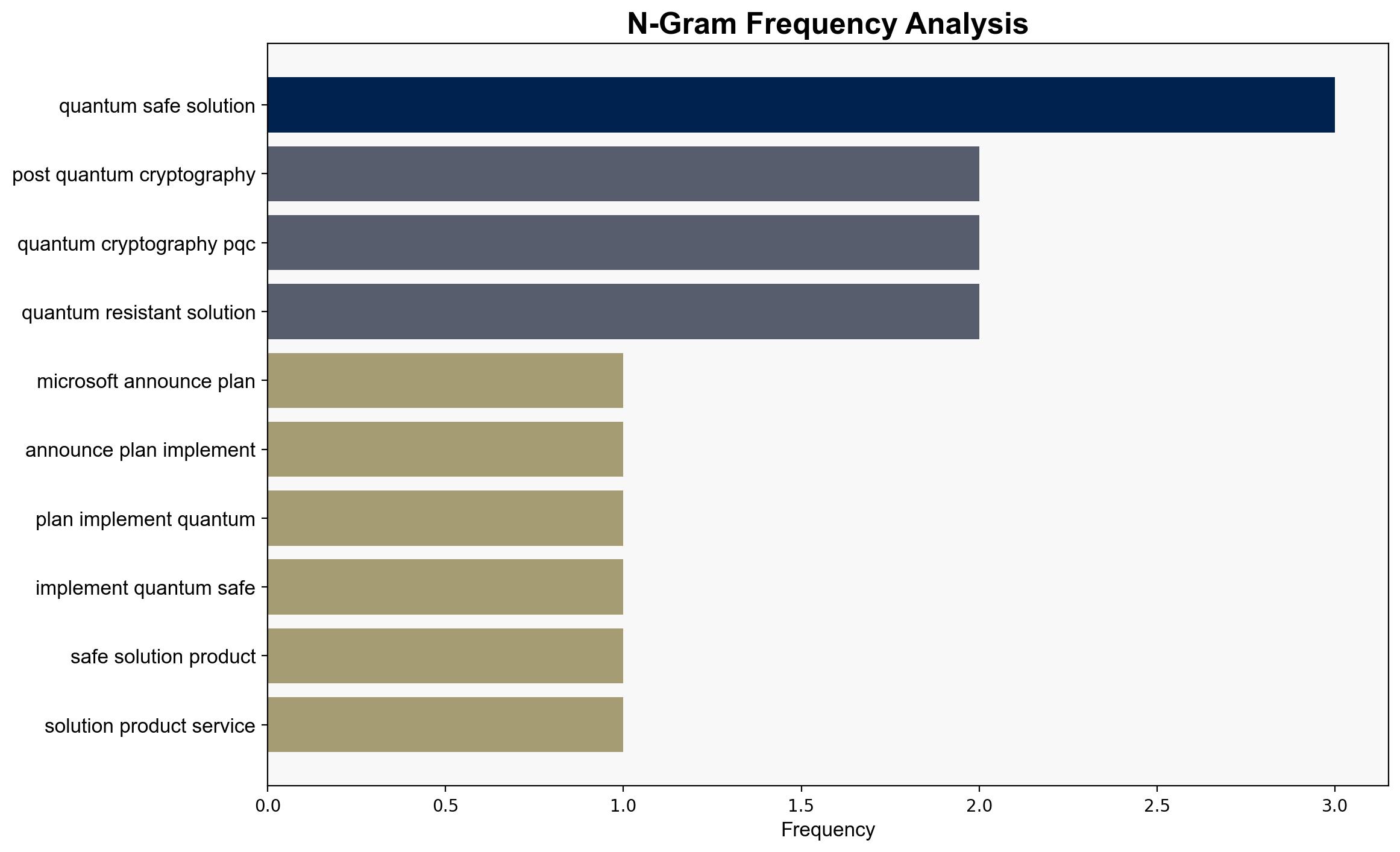Microsoft to Make All Products Quantum Safe by 2033 – Infosecurity Magazine
Published on: 2025-08-22
Intelligence Report: Microsoft to Make All Products Quantum Safe by 2033 – Infosecurity Magazine
1. BLUF (Bottom Line Up Front)
Microsoft’s initiative to transition all products to quantum-safe cryptography by 2033 is a strategic move to preemptively counter future quantum computing threats. The most supported hypothesis is that this initiative is primarily driven by the need to align with global government standards and maintain market leadership in cybersecurity. Confidence level: High. Recommended action: Monitor Microsoft’s progress and evaluate alignment with emerging quantum-safe standards to ensure competitive parity and compliance.
2. Competing Hypotheses
Hypothesis 1: Microsoft’s quantum-safe initiative is primarily driven by compliance with international government standards and the need to secure its infrastructure against future quantum threats.
Hypothesis 2: The initiative is a strategic marketing move to position Microsoft as a leader in cybersecurity, leveraging quantum-safe capabilities to gain competitive advantage and reassure customers.
3. Key Assumptions and Red Flags
Assumptions:
– Quantum computing will advance to a level that threatens current encryption within the next decade.
– Governments will enforce stringent quantum-safe standards globally.
– Microsoft’s timeline is realistic and achievable.
Red Flags:
– Potential overestimation of quantum computing threat timeline.
– Lack of detailed roadmap for achieving the 2033 target.
– Dependence on external factors such as hardware innovation and international regulatory changes.
4. Implications and Strategic Risks
The transition to quantum-safe cryptography could set a precedent for industry-wide adoption, influencing global cybersecurity standards. However, it also poses risks such as increased costs and potential disruptions during the transition phase. Geopolitically, countries lagging in quantum-safe adoption may face increased vulnerability. Economically, companies failing to transition may lose competitive edge.
5. Recommendations and Outlook
- Monitor technological advancements in quantum computing to adjust timelines and strategies accordingly.
- Engage in partnerships with quantum research institutions to stay ahead of technological developments.
- Scenario Projections:
- Best Case: Microsoft successfully transitions by 2033, setting industry standards and gaining market leadership.
- Worst Case: Delays in transition lead to security vulnerabilities and loss of customer trust.
- Most Likely: Gradual transition with periodic updates aligning with global standards, maintaining competitive parity.
6. Key Individuals and Entities
– Microsoft
– National Security Agency (NSA)
– National Institute of Standards and Technology (NIST)
7. Thematic Tags
national security threats, cybersecurity, quantum computing, cryptography, global standards





